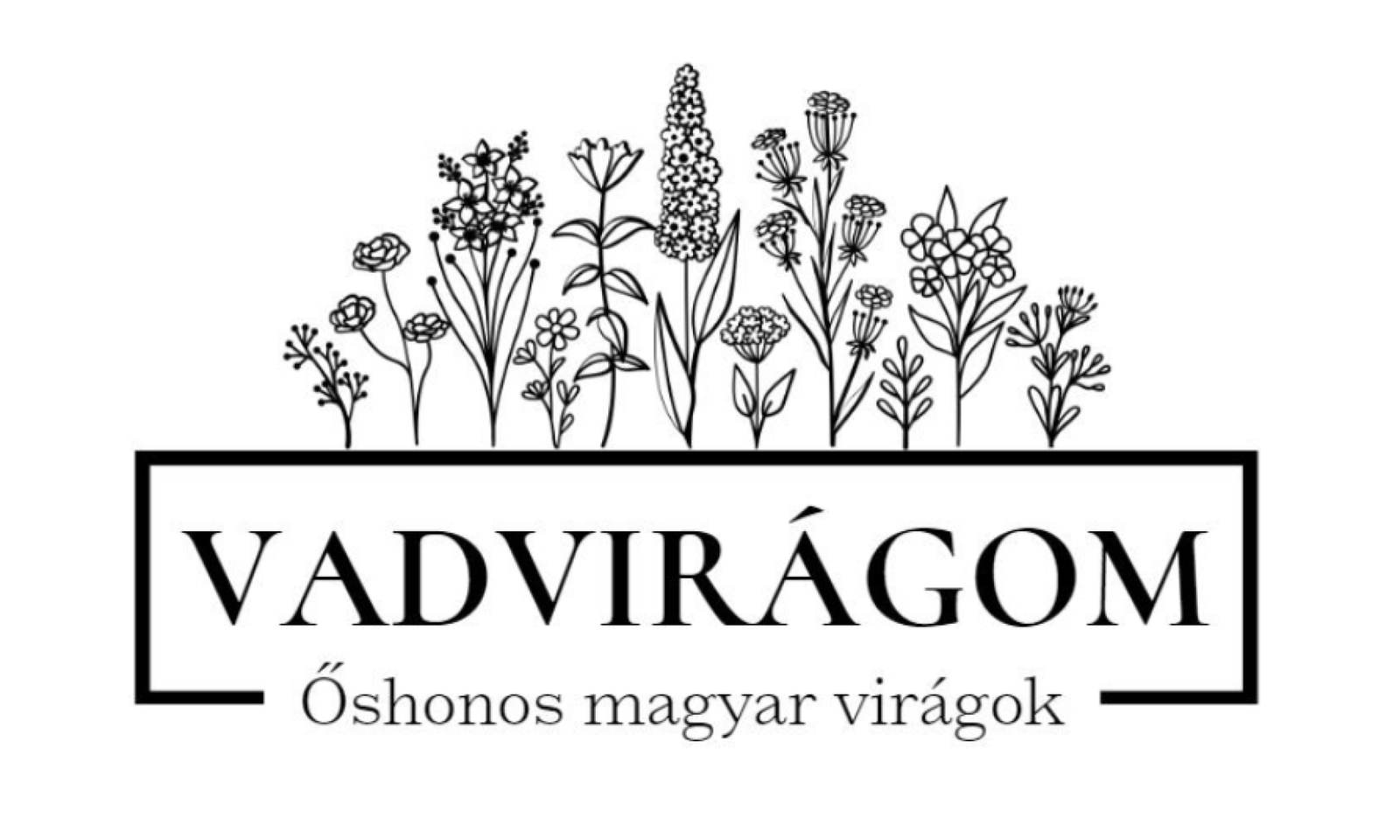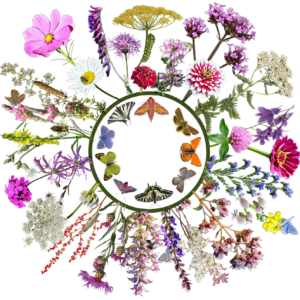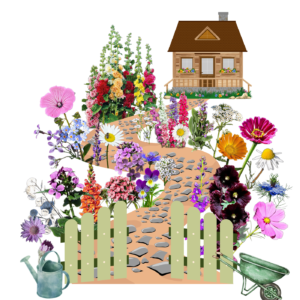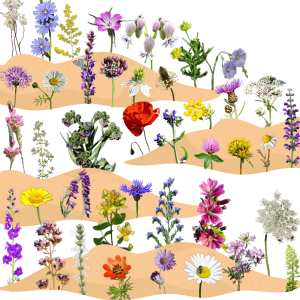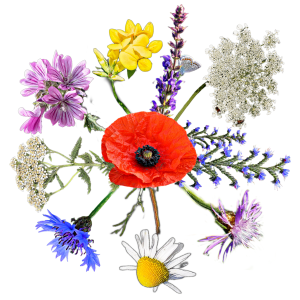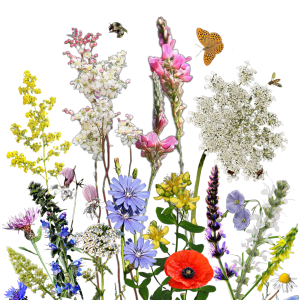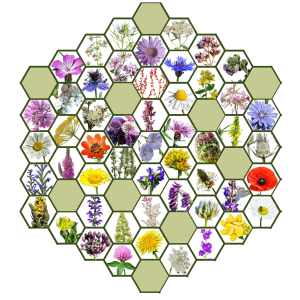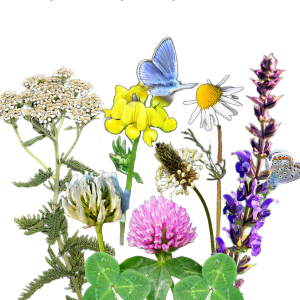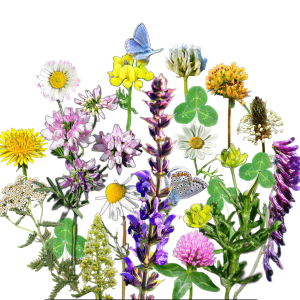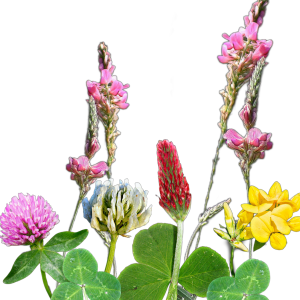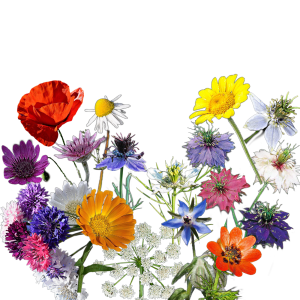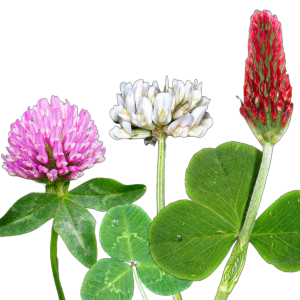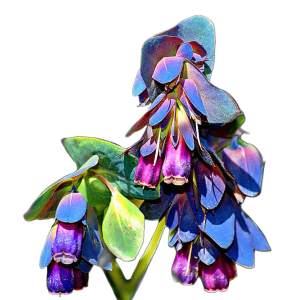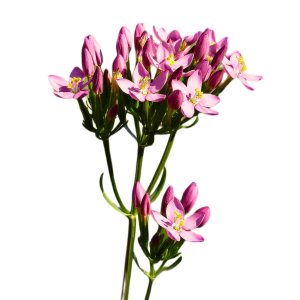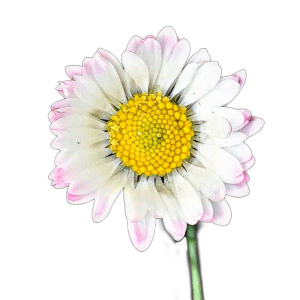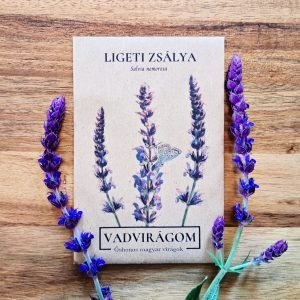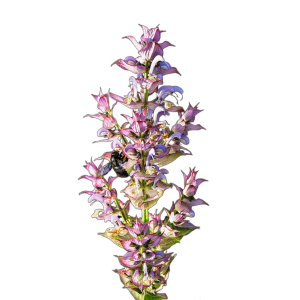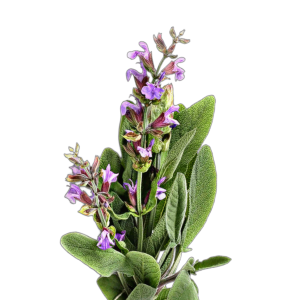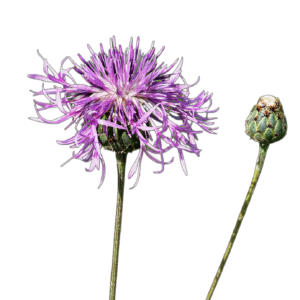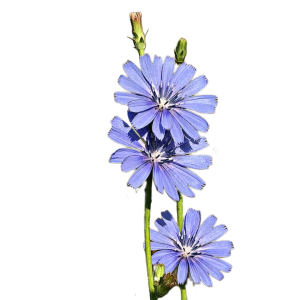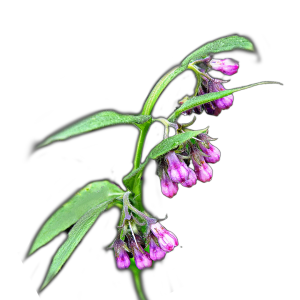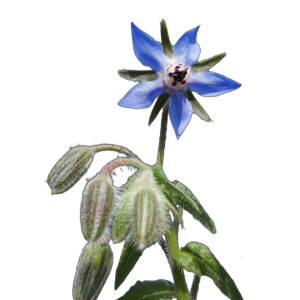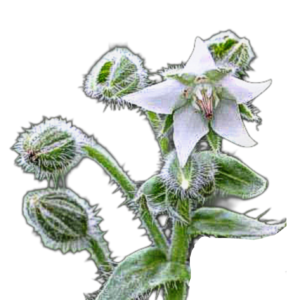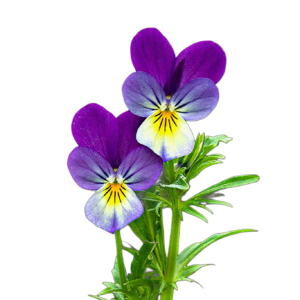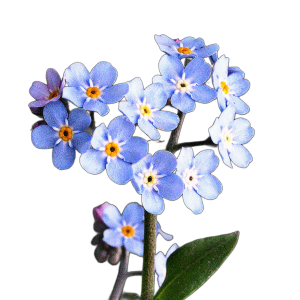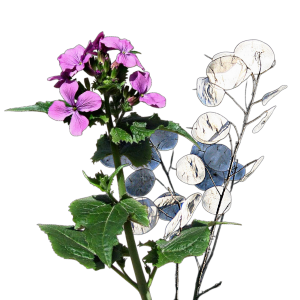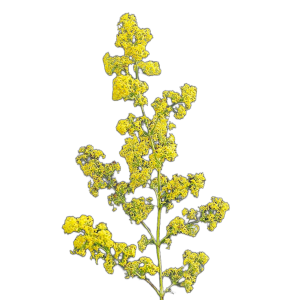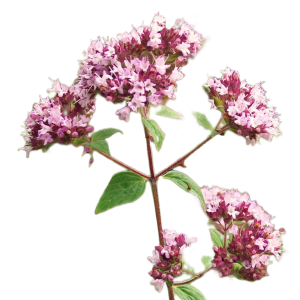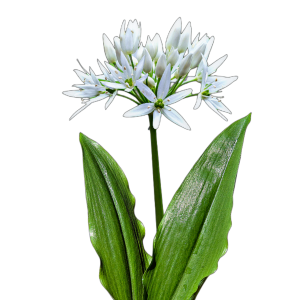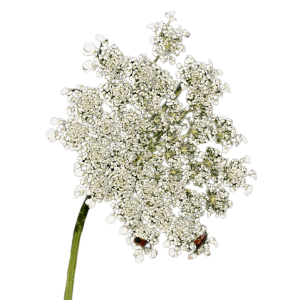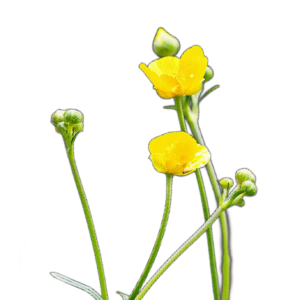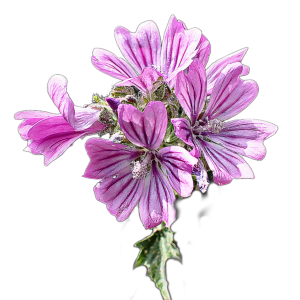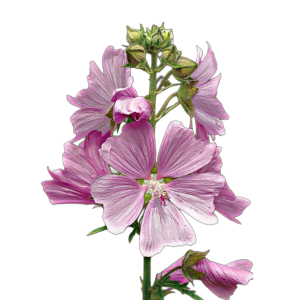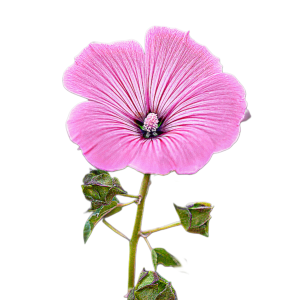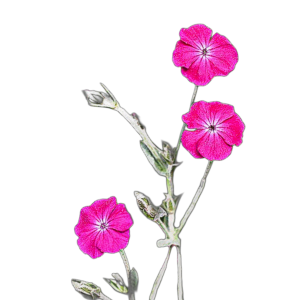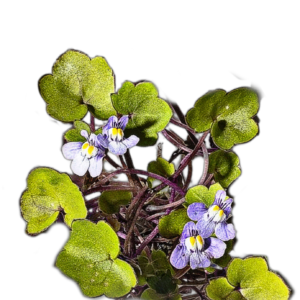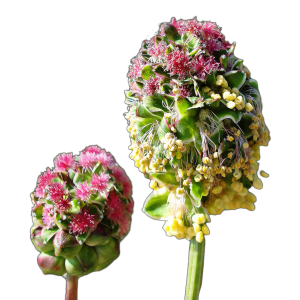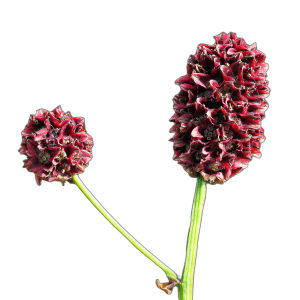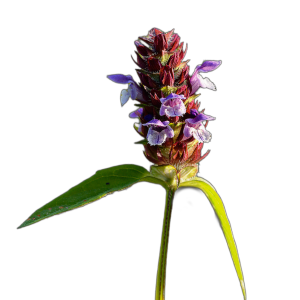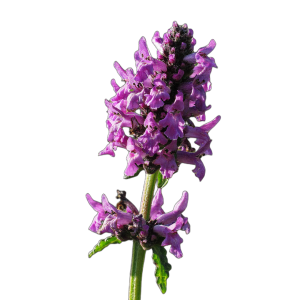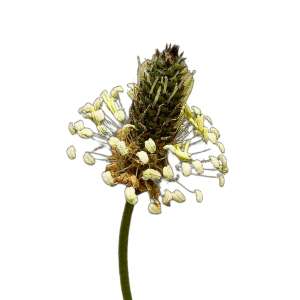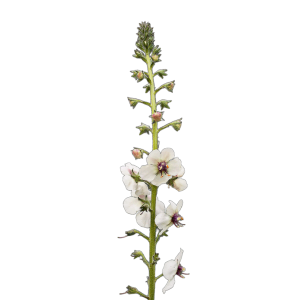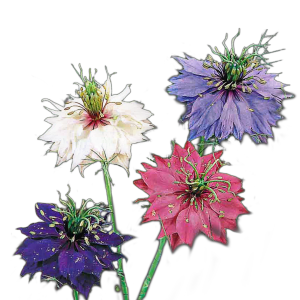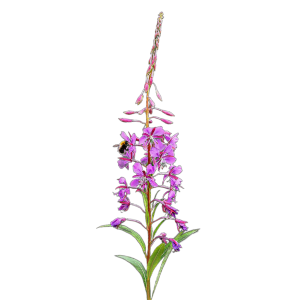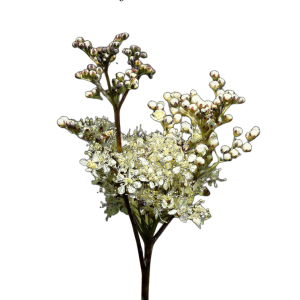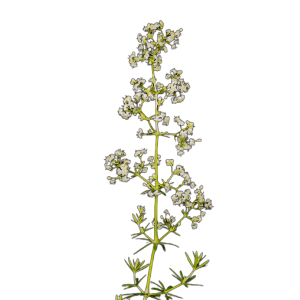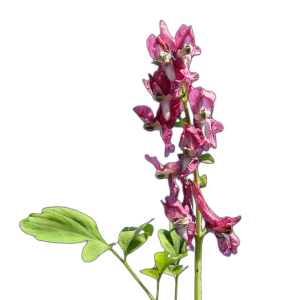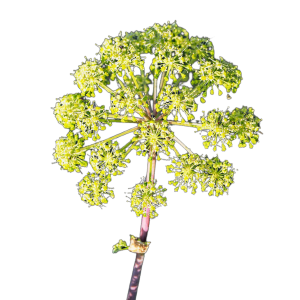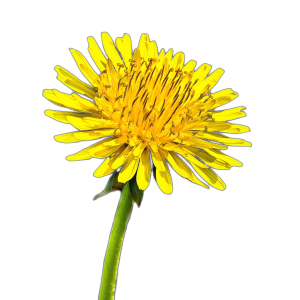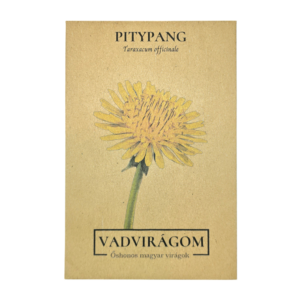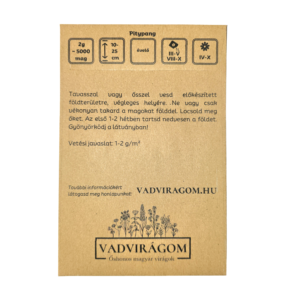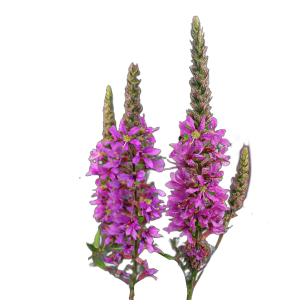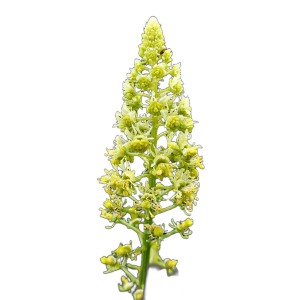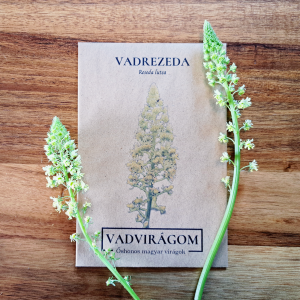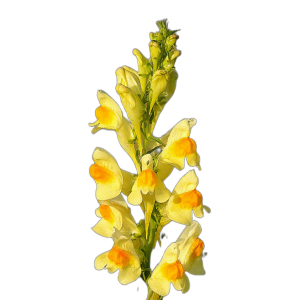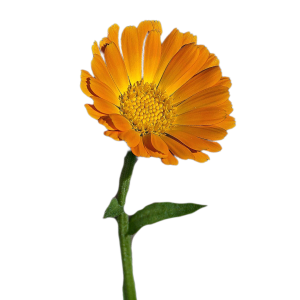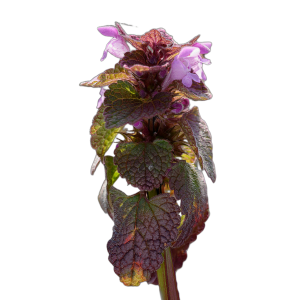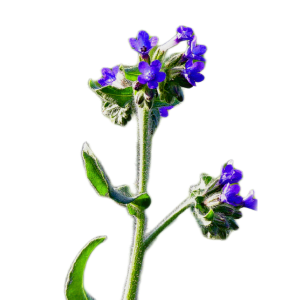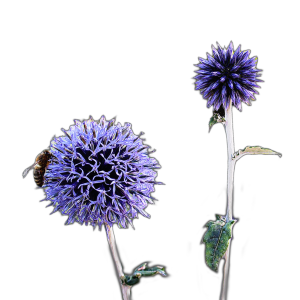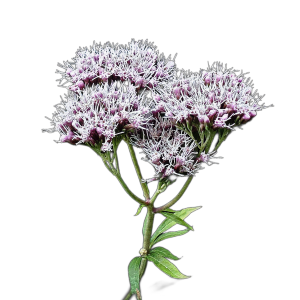- "Szurokfű/Oregánó (Origanum vulgare) 1g, ~12000 mag" nem adható a kosárhoz, mert a termék elfogyott.
-
-
Select options
There are several variations of this product. The variants can be selected on the product page
- Add to wishlistAdd to wishlist
- butterflies' favourite, butterfly attractant seed mix, seed mix
MAPMAKER 2.0 - caterpillar, hemp and moth seed mix (NEW!)
- 950 Ft - 8.000 Ft
- Butterfly Lure 2.0 is a seed mix for caterpillars, butterflies and sedges, the result of 1 year of research, which has resulted in a seed mix of the best nectar-producing and nutritious plant species. The majority of moths and sedges are very selective when they are caterpillars and have only a few or only 1 or 1 species of food plant: this is the plant on which the moth lays its eggs and the leaves of this plant are eaten by the caterpillars.
Add to wishlistAdd to wishlist -
Select options
There are several variations of this product. The variants can be selected on the product page
-
-
Select options
There are several variations of this product. The variants can be selected on the product page
- Add to wishlistAdd to wishlist
- seed mix, nostalgic seed mix, cut flower
MAMA GARDEN - nostalgic seed mix (NEW!)
- 950 Ft - 5.000 Ft
- The Mama's Garden nostalgic seed mix is a true love project, reaching back to the roots where many of our passion for flowers began: our Mama's garden. With this seed mix I would like to thank and pay tribute to our grandmothers, for letting us learn from them about gardening practices, for introducing us to those nostalgic, now partly forgotten flowers and for laying the foundations for our passion for gardening. So I have chosen species that for me are typical of the old...
Add to wishlistAdd to wishlist -
Select options
There are several variations of this product. The variants can be selected on the product page
-
-
Select options
There are several variations of this product. The variants can be selected on the product page
- Add to wishlistAdd to wishlist
- butterflies' favourite, seed mix
BOKRÉTA - cut flower seed mix (NEW!)
- 950 Ft - 4.000 Ft
- The Bokréta cut flower seed mix is designed for flower and bouquet lovers. It's also a perfect gift for women's day or mother's day :) For the price of half a bunch, we will have a lot of bunches of flowers, not only in the year of sowing, but also in the years to come. The Bokréta seed mix is a mixture of 25 species of annual, biennial and perennial flowers, with a predominance of...
Add to wishlistAdd to wishlist -
Select options
There are several variations of this product. The variants can be selected on the product page
-
-
Select options
There are several variations of this product. The variants can be selected on the product page
- Add to wishlistAdd to wishlist
- 40 native Hungarian wild flowers for sandy soil, seed mix
BUCKALAKO seed mix
- 950 Ft - 16.000 Ft
- By popular demand, the wildflower meadow or beehive seed mix for sandy soil is ready! Buckalako seed mix contains 40 native Hungarian species that are drought tolerant and thrive in sandy soils. During the germination period it is important to keep the area moist: in autumn and spring for autumn sowing and in spring for spring sowing. Once the seedlings have germinated, they require no or very minimal watering (of course, months of drought...
Add to wishlistAdd to wishlist -
Select options
There are several variations of this product. The variants can be selected on the product page
-
-
Select options
There are several variations of this product. The variants can be selected on the product page
- Add to wishlistAdd to wishlist
- 10 native Hungarian wildflowers, seed mix
BEE 2.0 - Bee-feeding seed mix
- 900 Ft - 13.000 Ft
- Make your garden wild with this annual herbaceous seed mix of 10 native Hungarian species and welcome beneficial pollinators to your garden! This mix is a taster into the world of bee-keepers: we have selected 10 species that are pollinator favourites and will make beautiful ornaments to your garden with their long flowering. It includes annual, biennial and perennial flowers. Features: life cycle: annual, biennial, perennial flowering time: may-october size:...
Add to wishlistAdd to wishlist -
Select options
There are several variations of this product. The variants can be selected on the product page
-
-
Select options
There are several variations of this product. The variants can be selected on the product page
- Add to wishlistAdd to wishlist
- 20 native Hungarian wild flowers, seed mix
POLLENANYO 2.0 - beekeeping seed mix
- 900 Ft - 14.500 Ft
- One of the smaller members of the 10-60 species bee-feeding mix range is the pollinator-friendly Pollen Mother seed mix. Go wild with this seed mix and welcome beneficial pollinators to your garden! The more species a mix contains, the more native pollinator species it supports, Pollenanyó pollinator-friendly seed mix contains the best 20 native Hungarian wildflowers for you and your pollinators. And they are beautiful too :) Features:...
Add to wishlistAdd to wishlist -
Select options
There are several variations of this product. The variants can be selected on the product page
-
-
Select options
There are several variations of this product. The variants can be selected on the product page
- Add to wishlistAdd to wishlist
- 40 Hungarian and European wild flowers, seed mix
NEK-TÁR 3.0 - beekeeping seed mix
- 950 Ft - 17.500 Ft
- Make your garden wild with this annual-biennial-annual-evergreen bee-feeding seed mix of 40 species of Hungarian and European wildflowers and welcome beneficial pollinators to your garden! In addition to the Beporzone of 30 native wildflower species, this mix also includes some great pollinator-attracting Mediterranean wildflowers such as borage, marigold, garden ladybird and anise. It also contains several annual European wildflower species,...
Add to wishlistAdd to wishlist -
Select options
There are several variations of this product. The variants can be selected on the product page
-
-
Select options
There are several variations of this product. The variants can be selected on the product page
- Add to wishlistAdd to wishlist
- 50 species of native wild flowers, seed mix
BEES NO? - beekeeping seed mix
- 950 Ft - 19.000 Ft
- One of the larger members of the 10-60 species beekeeping mixture series, Méh ne? is a native Hungarian beekeeping seed mixture of 50 species (the largest native Hungarian member of the series). Wild your garden with this seed mix and welcome beneficial pollinators to your garden! The more species a mix contains, the more native pollinator species it supports. This blend has been developed with the above in mind,...
Add to wishlistAdd to wishlist -
Select options
There are several variations of this product. The variants can be selected on the product page
-
-
Select options
There are several variations of this product. The variants can be selected on the product page
- Add to wishlistAdd to wishlist
- 60 native European wild flowers, seed mix
ZÜMMÖGDE - beekeeping seed mix
- 950 Ft - 20.500 Ft
- The largest member of the 10-60 species beekeeping seed mixture series, Zümmögde, is a native Hungarian beekeeping seed mixture of 60 species (the largest member of the series). Wild your garden with this seed mix and welcome beneficial pollinators to your garden! The more species a mix contains, the more native pollinator species it supports. This mix has been developed with the above in mind, and we have tried to include...
Add to wishlistAdd to wishlist -
Select options
There are several variations of this product. The variants can be selected on the product page
-
-
Select options
There are several variations of this product. The variants can be selected on the product page
- Add to wishlistAdd to wishlist
- can be sown in grass, seed mix, beekeeping, native grassland, native
FRUITFUL FURRY seed mix
- 2.500 Ft - 7.500 Ft
- Want a beautiful, colourful and thriving lawn? With a mixture of 7 native wildflowers, the Flowering Native Lawn is guaranteed to be a hit with pollinators: the catkin, sage and hornwort are very popular with butterflies, while the white testicle provides food for short-tongued pollinators such as the house bee and the red testicle for long-tongued bees, including bumblebees. Like all butterfly...
Add to wishlistAdd to wishlist -
Select options
There are several variations of this product. The variants can be selected on the product page
-
-
Select options
There are several variations of this product. The variants can be selected on the product page
- Add to wishlistAdd to wishlist
- can be sown in grass, seed mix, beekeeping, native grassland, native
FERTILIZED FERTILIZED EXTRA seed mix
- 3.500 Ft - 10.000 Ft
- Want a beautiful, colourful and thriving lawn? After the highly successful Flowering Ancestral Grass with 7 native wildflower species, its bigger brother, the Flowering Ancestral Grass Extra Seed Mix with 15 species of native Hungarian seeds, is now available. This is a guaranteed success with pollinators: catkin, sage, spotted knapweed, rabbit's foot, hairy vetch and hornwort are very popular with butterflies,...
Add to wishlistAdd to wishlist -
Select options
There are several variations of this product. The variants can be selected on the product page
-
-
Select options
There are several variations of this product. The variants can be selected on the product page
- Add to wishlistAdd to wishlist
- can be sown between grass, seed mix, green manure
NITRO seed mix
- 1.750 Ft
- Want to improve soil quality naturally while benefiting pollinators? That's exactly what our 5-species green manure seed mix is for! Each species enriches the soil with nitrogen, increasing future yields. Forget fertilizers and use an ecologically sustainable solution while supporting pollinators. Characteristics: life cycle: annual, perennial flowering time: may-october size: 10-60 cm soil: dry, average growing conditions: sunny pollination factor: 9/10...
Add to wishlistAdd to wishlist -
Select options
There are several variations of this product. The variants can be selected on the product page
-
-
Select options
There are several variations of this product. The variants can be selected on the product page
- Add to wishlistAdd to wishlist
- 15 annual Hungarian and European wildflowers for the balcony or window box, seed mix
Oh, ROMERO annual seed mix - also for the balcony
- 950 Ft - 2.750 Ft
- What? Bee-keeper on balcony or balcony? Yes! Just like the highly successful Yarrow seed mix, you can make your garden, balcony or balcony go wild with the annual seed mix of 13 native Hungarian and European species of Oh, Romeo and welcome beneficial pollinators to your garden! Can also be sown in a balcony box. This mix also includes some very colourful, cultivated varieties of some of our favourite flowers. It's made up of easy-to-grow varieties, so if you...
Add to wishlistAdd to wishlist -
Select options
There are several variations of this product. The variants can be selected on the product page
-
-
Select options
There are several variations of this product. The variants can be selected on the product page
- Add to wishlistAdd to wishlist
- may be sown in grass, seed mix, permanent grassland
TRIUMVIRÁGUS seed mix
- 1.750 Ft - 2.500 Ft
- Want a beautiful, colourful and thriving lawn? With this mix, success is guaranteed, even for pollinators: white clover feeds short-tongued pollinators such as house bees, while red clover and purple clover feed long-tongued pollinators such as bumblebees. Like all butterfly plants, testes fix nitrogen from the air and enrich the soil with it. This...
Add to wishlistAdd to wishlist -
Select options
There are several variations of this product. The variants can be selected on the product page
-
-
Add to basket
- Add to wishlistAdd to wishlist
- 10/10 pollinator factor, also for window box, annual, bee-feeder
Lily of the valley (Cerinthe major "Purpurascens) 1g, ~20 seeds
- 875 Ft
- Cerinthe major is a native European flower, the cultivated form of which is this purple, "Purpurascens" colour variation. We also have the wild freckle-leaved Cerinthe minor, which has very interestingly mottled leaves, so you can recognise it from a distance. A close relative of this native species is this European annual species, but while the Hungarian species has yellow flowers, the 'Purpurascens' species...
Add to wishlistAdd to wishlist -
Add to basket
-
-
Add to basket
- Add to wishlistAdd to wishlist
- perennial, herb, bee-keeper, native
Centaurium erythrea 0,01g, ~990 seeds
- 875 Ft
- Centaurium erythrea is one of our most beautiful wild flowers. Its pink, star-shaped flowers, arranged in umbels, only open in sunshine. Its medicinal properties have been known since antiquity, and its active ingredients stimulate digestion and bile flow. The latter, together with its bitter taste, makes it an indispensable ingredient in stomachic dishes. Its extraction is not easy, it is recommended only for seed-sowing ninjas and requires patience and luck. Properties: other names: centaurea, gentian, sturgeon's weed, centaurea,...
Add to wishlistAdd to wishlist -
Add to basket
-
-
Add to basket
- Add to wishlistAdd to wishlist
- perennial, herb, bee-keeper, native
Daisy (Bellis perennis) 0,25g, ~1800 seeds
- 875 Ft
- I think no one needs to be introduced to my favourite creator of flower lawns. The wild form of the daisy (Bellis perennis) is our native wildflower, which does very well in grass and lawns. It is best sown with grass or in seed mixtures when mowing, but do not sow it amongst your existing grass: it is best sown as seedlings, which will germinate very well over time when planted amongst the grass. Its attractiveness as a pollinator is incredible...
Add to wishlistAdd to wishlist -
Add to basket
-
-
Add to basket
- Add to wishlistAdd to wishlist
- 10/10 pollinator, perennial, butterfly favourite, bee-feeder, native
Ligeti sage (Salvia nemorosa) 1g, ~925 seeds
- 875 Ft
- Lime sage (Salvia nemorosa) is one of our most beautiful wild flowers, and its cultivars can be found in many garden shops. No garden should be without it, it is a great favourite with pollinators. The various buttercups are particularly fond of it (see photo), but it is also a great favourite of bumblebees. Lime sage is less well known for its medicinal properties, but like medicinal sage it can be used for its antiseptic properties, or as a herb (although it is also a...
Add to wishlistAdd to wishlist -
Add to basket
-
-
Add to basket
- Add to wishlistAdd to wishlist
- 10/10 pollinator, perennial, biennial, butterfly favourite, bee-feeder, native
Musk sage (Salvia sclarea) 2g, ~500 seeds
- 875 Ft
- Musk sage (Salvia sclarea) is not native to our area, but it is a great choice for our gardens. Muscadine sclare is a beautiful large-flowered pink or purple sage originally from the Mediterranean, and unlike other sage species it is a biennial. Sometimes white varieties are also found in nurseries. It is a particular favourite of blue woodpeckers, as shown in the picture. The essential oils made from its flowers and leaves are often used in food, cosmetics, and...
Add to wishlistAdd to wishlist -
Add to basket
-
-
Add to basket
- Add to wishlistAdd to wishlist
- 10/10 pollinator, perennial, butterfly favourite, bee-feeder, native
Medical Sage (Salvia officinalis) 2g, ~240 seeds
- 875 Ft
- Medicinal sage (Salvia officinalis) is a medicinal and aromatic plant originally from the Mediterranean, long known and cultivated. It has been used for a very long time for many ailments ranging from sore throats to enteritis. It is also made into a tea, which is not recommended for breastfeeding or pregnant women. It can also be used as a spice, especially for duck, turkey and game meat, and is also found in Provance spice blends. Along with lavender, it has recently been the focus of research...
Add to wishlistAdd to wishlist -
Add to basket
-
-
Add to basket
- Add to wishlistAdd to wishlist
- 10/10 pollinator, perennial, bee-feeder, native
Common yarrow (Achillea millefolium) 1g, ~7000 seeds
- 875 Ft
- Common yarrow (Achillea millefolium) is well known and is one of our best pollinator wildflowers. Its long flowering period makes it particularly valuable. Evergreen, it is also an excellent choice for lawns. It is a medicinal herb and can even be made into tea. Properties: other names: medicinal yarrow, shagbark, yarrow, mouse-tail, thousandleaf, medicinal thousandleaf, turkey-grass Latin name: Achillea millefolium family: Asteraceae life: perennial flowering time: June-October size: 40-60 cm (flowers lower in mown lawns) soil: dry, average growing area: sunny other: herb...
Add to wishlistAdd to wishlist -
Add to basket
-
-
Add to basket
- Add to wishlistAdd to wishlist
- 10/10 pollinator, perennial, butterfly favourite, bee-feeder, native
Iron-veined Imola (Centaurea scabiosa) 0,25g, ~40 seeds
- 875 Ft
- Centaurea scabiosa is a native Hungarian wildflower. According to a British study, the iron-veined imola is one of the TOP3 pollinator-attracting wildflowers: it is frequented by many pollinators, especially butterflies, and is a great nectar producer. Its very long flowering, lasting all summer and into late autumn, makes it particularly important for pollinators. The imola family includes the cornflower, meadow imola, mountain imola, Hungarian imola...
Add to wishlistAdd to wishlist -
Add to basket
-
-
Add to basket
- Add to wishlistAdd to wishlist
- perennial, bee-keeper, native
Chickweed (Cichorium intybus) 1g, ~660 seeds
- 875 Ft
- A well-known wildflower is the field marigold (Cichorium intybus), which attracts pollinators with its pollen. Its flowering in autumn is an important time for pollinators. It was also used to make chicory coffee, but nowadays the cultivated variety is used for this purpose. Its pollen is white in colour. Properties: other names: thistle, wild chicory, endive, yucca, katanchory, coffee-cake, blue flower, sunflower, sunflower-flowering grass Latin name: Chicorium intybus family: Asteraceae life: perennial flowering time: July-October size:80-100 cm...
Add to wishlistAdd to wishlist -
Add to basket
-
-
Add to basket
- Add to wishlistAdd to wishlist
- perennial, herb, bee-keeper, native
Black Coneflower (Symphytum officinale) 0,5g, ~50 seeds
- 875 Ft
- The black needlewort (Symphytum officinale) is a very well-known native herb, mostly used externally as an ointment for broken bones, sprains, bruises, sprains and similar conditions. The root and leaves are collected and used to make ointments, tinctures and poultices. Its use internally is not recommended because of its alcohol content of pyrrolizidine, which is harmful to the liver. Like other borage species, such as medical atracil, teriy...
Add to wishlistAdd to wishlist -
Add to basket
-
-
Add to basket
- Add to wishlistAdd to wishlist
- 10/10 pollinator factor, also for window boxes, annual, edible flower, bee-feeder
Borage (Borago officinalis) 2g, ~90 seeds
- 875 Ft
- Borage (Borago officinalis) is a cucumber-scented, hairy-looking annual plant from the Mediterranean. One of the best pollinator flowers in Europe, it attracts all insect groups. Research has shown that its nectar can be replenished in 5 minutes, providing an almost constant supply for hungry little pollinators, which is why it is so popular around borer branches. In particular, it is home to many species of bumblebee, just like the native Hungarian borage species...
Add to wishlistAdd to wishlist -
Add to basket
-
-
Add to basket
- Add to wishlistAdd to wishlist
- 10/10 pollinator factor, also for window boxes, annual, edible flower, bee-feeder
White borage (Borago officinalis "Alba") 0,5g, ~20 seeds
- 875 Ft
- Borage (Borago officinalis) is a cucumber-scented, hairy-looking annual plant from the Mediterranean. It is a white variety of the wild blue colour. One of the best pollinator flowers in Europe, it attracts all insect groups. Research has shown that it can replenish its nectar in 5 minutes, providing an almost constant supply for hungry little pollinators, which is why it is so popular around boreholes. In particular, many...
Add to wishlistAdd to wishlist -
Add to basket
-
-
Add to basket
- Add to wishlistAdd to wishlist
- also in a window box, edible flower, biennial
Pansy tricolor (Viola tricolor) 0,25g, ~375 seeds
- 875 Ft
- The tricolour pansy (Viola tricolor), or wild pansy, is a native Hungarian wildflower. It is perhaps one of our best known and most loved flowers, and fortunately it is often planted in gardens. It is one of the most popular and most loved flowers of our gardens, and it is also one of the most popular and most loved flowers of our gardens. If left to grow, it reproduces very well (it even thrives in the gravel of our driveway!). It is very sweet to my heart,...
Add to wishlistAdd to wishlist -
Add to basket
-
-
Add to basket
- Add to wishlistAdd to wishlist
- also in a window box, edible flower, biennial
Pansy (Viola arvensis) 1g, ~1500 seeds
- 875 Ft
- The field pansy (Viola arvensis) is a native Hungarian wildflower. Its relative, the tricolour pansy, is perhaps one of our most well known and loved flowers, and fortunately it is often planted in gardens. It is a particular highlight of early spring, as the small flowers sown the previous year bloom around March. If left to grow, it reproduces very well (it even thrives in the gravel of our driveway!). A...
Add to wishlistAdd to wishlist -
Add to basket
-
- Out of StockRead more
- Add to wishlistAdd to wishlist
- 10/10 pollinator factor, also for balcony box, biennial, bee-feeder
Forest forget-me-not (Myosotis sylvatica "Victoria Indigo Blue") 0,5g, ~875 seeds
- 875 Ft
- Along with tulips and daffodils, the woodland forget-me-not (Myosotis sylvatica) is an essential flower in a real spring garden. It is also found in the wild, usually in shady to semi-shady woods and forest edges. It is also worth choosing a shady spot in the garden. It is also a member of the borage family, along with the medical atracaela, the terry-leaved snakeroot, the black needle-leaved fern, the common tadpole or the medical lungwort. It is an important spring food source for pollinators,...
Add to wishlistAdd to wishlist -
-
-
Add to basket
- Add to wishlistAdd to wishlist
- two-year-old, beekeeper
Moonviola (Lunaria annua) 1,5g, ~90 seeds
- 875 Ft
- The garden moonviola (Lunaria annua), also known as Judas money, is the typical flower from mum's garden :) It is also a wildflower native to our area, and its flowers are also very pretty, but it is named Judas money because of its silvery seed pods. The dried seed pods can also be a beautiful element in dried bouquets. It prefers semi-shady, shady areas and wetter soils. If the flower heads are not cut off and left...
Add to wishlistAdd to wishlist -
Add to basket
-
-
Add to basket
- Add to wishlistAdd to wishlist
- biennial, butterfly favourite, bee-feeder, native
Common tongue-grass (Cynoglossum officinale) 0,5g, ~20 seeds
- 875 Ft
- The common tadpole (Cynoglossum officinale) is a member of the borage family and, like all its relatives, is a great bee and butterfly attractant and our native wildflower. It is so called because of its slightly hairy appearance and drooping, dog-tongue-like leaves. Its flowers open pink and then turn purplish blue. It used to be used as a medicinal herb, but today's research suggests that it contains toxic compounds and is not recommended. Properties.
Add to wishlistAdd to wishlist -
Add to basket
-
- Out of StockRead more
- Add to wishlistAdd to wishlist
- 10/10 pollinator, perennial, butterfly favourite, bee-feeder, native
Milk thistle (Galium verum) 1g, ~3200 seeds
- 875 Ft
- The milkweed (Galium verum) is a native Hungarian wildflower that attracts many pollinators and is also a food plant for many butterfly species (including many of our protected butterflies, the sedge). It was used to make cheese, hence its name ('gala' means milk in Greek). It can also be used as a yellow dye, and in the past it was used not only to rennet milk but also to colour cheese, for example Gloucester cheese has a strong yellowish-orange colour...
Add to wishlistAdd to wishlist -
-
- Out of StockRead more
- Add to wishlistAdd to wishlist
- 10/10 pollinating factor, perennial, herb, medicinal plant, butterfly favourite, bee-feeder, native
Oregano (Origanum vulgare) 1g, ~12000 seeds
- 875 Ft
- Oregano (Origanum vulgare) is a wild Hungarian variety of the spice known as pitch grass, which is most commonly known as pitch grass or wild marjoram. It has a less intense flavour than the Mediterranean variety used in Bolognese sauce, but it can be used as a spice and herb. It's also one of our most attractive wild flowers for pollinators, visited by a cavalcade of solitary bees, bumblebees and butterflies for nectar. Properties.
Add to wishlistAdd to wishlist -
-
-
Add to basket
- Add to wishlistAdd to wishlist
- perennial, bee-keeper, native
Wormwood (Tanacetum vulgare) 0,5g, ~5000 seeds
- 875 Ft
- When planting worm castor (Tanacetum vulgare), you don't need to worry about it chasing away our beneficial worms, as it gets its name from its intestinal worming action, not from this. In ancient Egypt they were also used for embalming and then covered with cloth made from flax. When rubbed, it has a spicy, camphorous scent. Because of this property, it is also used in bedding to repel ants, and when dried it can be used to repel moths. Foreign literature...
Add to wishlistAdd to wishlist -
Add to basket
-
-
Add to basket
- Add to wishlistAdd to wishlist
- also for window box, edible flower, perennial, herb, medicinal plant, bee-keeper, native
Allium ursinum 1g, ~130 seeds
- 875 Ft
- Allium ursinum (Allium ursinum) is one of our best-known native herbs and is justifiably popular. Like snake garlic, it is also known as wild garlic. A gift from the shady forests of spring, its mildly garlicky leaves are delicious crushed with walnuts and oil as a pesto or mixed into scones. When foraging in the woods, care should be taken not to confuse it with the poisonous lily of the valley, which has similar leaves to the...
Add to wishlistAdd to wishlist -
Add to basket
-
-
Add to basket
- Add to wishlistAdd to wishlist
- annual, beekeeping, native
Wild carrot (Daucus carota) 1g, ~1450 seeds
- 875 Ft
- Our well-known wild flower, the wild cousin of our favourite carrot, is the wild carrot (Daucus carota). Not only pollinators, but other insects are also very fond of it, and you can often see boda boda and other small insects basking on its top. It is the food plant of one of our beautiful butterfly species, the caterpillar of the swallowtail butterfly. Queen Ann's lace is one of the names given to it for its lace-like flowers. Interestingly, the young, open-flowering...
Add to wishlistAdd to wishlist -
Add to basket
-
-
Add to basket
- Add to wishlistAdd to wishlist
- annual, beekeeping, native
Wild Purple Violet (Daucus carota "Dara") 0,1g, ~145 seeds
- 875 Ft
- Our well-known wild flower, the wild cousin of our favourite carrot, is the wild carrot (Daucus carota). Not only pollinators, but other insects are also very fond of it, and you can often see boda boda and other small insects basking on its top. It is also the food plant of one of our beautiful butterfly species, the caterpillar of the swallowtail butterfly. This breeding variety starts flowering in purple and becomes increasingly pinker in hue as it opens. It is a fantastically graceful looking plant...
Add to wishlistAdd to wishlist -
Add to basket
-
-
Add to basket
- Add to wishlistAdd to wishlist
- perennial, bee-keeper, native
Ranunculus acris 1g, ~780 seeds
- 875 Ft
- The meadow buttercup (Ranunculus acris) is a native Hungarian wildflower, which, yellowing from May, almost covers the wetter primeval grasslands. Its yellow flowers often stand out in pastures, because, like other buttercup species, it is also poisonous and is not eaten by grazing animals. While seed buttercup is an annual flower, meadow buttercup is a perennial. It spreads by clinging and can form quite large colonies. It has become resistant to herbicides, so...
Add to wishlistAdd to wishlist -
Add to basket
-
-
Add to basket
- Add to wishlistAdd to wishlist
- annual, beekeeping
Wood mallow (Malva sylvestris "Zebrina") 0,5g, ~100 seeds (Copy)
- 875 Ft
- The forest mallow "Zebrina" (Malva sylvestris "Zebrina") is a cultivar of the forest mallow (Malva sylvestris), which is also native to our country. The forest mallow (Malva sylvestris) is our perennial wildflower, whose pollen is very popular with many bee species. Sometimes you can see bees drowning in the pollen of mallow :) A delicacy known as pap cheese. In ancient times, its leaves were used to make stew. The whole plant is edible and medicinal, and the flowers are used to make tea.
Add to wishlistAdd to wishlist -
Add to basket
-
-
Add to basket
- Add to wishlistAdd to wishlist
- perennial, bee-keeper, native
Wood mallow (Malva sylvestris) 1g, ~230 seeds
- 875 Ft
- The wood mallow (Malva sylvestris) is our perennial wildflower, whose pollen is much loved by many bee species. Sometimes you can see bees drowning in the pollen of mallow :) A delicacy known as pap cheese. In ancient times, its leaves were used to make stew. The whole plant is edible and medicinal, and the flowers can be made into tea. Applied externally, the leaves are excellent for wasp and scorpion stings and skin irritations. Several cultivated varieties are annuals, their pollinator attraction properties...
Add to wishlistAdd to wishlist -
Add to basket
-
-
Add to basket
- Add to wishlistAdd to wishlist
- two-year
Black Mallow Rose (Alcea rosea "Nigra") 2g, ~100 seeds
- 875 Ft
- The Black Mallow Rose (Alcea rosea 'Nigra') has a long tradition in Hungarian gardens and its pollen is also very popular with pollinators. Historically, the varieties were introduced to Europe from south-west China in the 15th century and, according to my information, the black colour variation was created by Hungarian breeding. In the Middle Ages, various parts of the plant were used for medicinal purposes, such as anti-inflammatory and digestive treatment, and as a dyeing plant...
Add to wishlistAdd to wishlist -
Add to basket
-
-
Add to basket
- Add to wishlistAdd to wishlist
- perennial, bee-keeper
Mallow (Malva sylvestris ssp. mauritiana) 1g, ~230 seeds
- 875 Ft
- The mallow (Malva sylvestris ssp. mauritania) is a subspecies of the forest mallow (Malva sylvestris), which is a European species native to the south of us. Although it can almost be regarded as a native species, as it has been known and cultivated in Hungary for centuries for its medicinal properties. As a medicinal herb, the dried petals of the mallow are brewed as a tea, which can be used for coughs, asthma and other upper respiratory ailments. And last but not least, it is a fantastic source of pollen: it...
Add to wishlistAdd to wishlist -
Add to basket
-
-
Add to basket
- Add to wishlistAdd to wishlist
- perennial, bee-keeper, native
Musk mallow (Malva moschata) 0,5g, ~250 seeds
- 875 Ft
- The musk mallow (Malva moschata) is a native Hungarian wildflower, whose pollen, like that of the forest mallow, is loved by many bee species. It gets its name from its distinctive scent, a perfume-like musky smell, hence the name. If you don't know what musk smells like, you should definitely try it :) Growing bushy, it can be a perfect alternative to the often deadly alien pink/splendid grove sedge that is often a threat to ducktail sedge. It blooms all summer, from June to September,...
Add to wishlistAdd to wishlist -
Add to basket
-
-
Add to basket
- Add to wishlistAdd to wishlist
- perennial, bee-keeper
Garden sage (Lavatera trimestris "Silver Cup") 1g, ~150 seeds
- 875 Ft
- The garden mallow (Lavatera trimestris) is a species native to the Mediterranean region, often planted as an ornamental. It is a real Jolly Joker: in the spring, around May, it sheds its seeds and grows very quickly, producing huge hibiscus-like flowers from June until frost. If you're the impatient type and want to enjoy a quick spring scattering, it's a great choice. It can grow quite large, up to 80 cm...
Add to wishlistAdd to wishlist -
Add to basket
-
-
Add to basket
- Add to wishlistAdd to wishlist
- perennial, herb, bee-keeper, native
Medical soap grass (Saponaria officinalis) 1g, ~750 seeds
- 875 Ft
- Medical soapwort (Saponaria officinalis) is a native Hungarian wildflower. As its name suggests, it can also be used for washing hands. If not as a soap, then as a herb or pollinator-attracting ornamental plant, it can have a great place in your garden. Properties.
Add to wishlistAdd to wishlist -
Add to basket
-
-
Add to basket
- Add to wishlistAdd to wishlist
- perennial, herb, bee-keeper, native
St. John's wort (Hypericum perforatum) 1g, ~10500 seeds
- 875 Ft
- St. John's wort (Hypericum perforatum) is a native Hungarian wildflower. Perhaps the most curious information about St. John's wort is that it was used in the Middle Ages as an exorcism for its antidepressant, sedative and mood-enhancing properties. Its use as an exorcism is no longer recommended, but it is used both externally and internally as a medicinal herb. Pollinators (especially bumblebees), however, are delighted by its orange pollen. Properties: other names: dandelion, common dandelion, dandelion with holes in the leaves,...
Add to wishlistAdd to wishlist -
Add to basket
-
-
Add to basket
- Add to wishlistAdd to wishlist
- perennial, butterfly, bee-feeder, native
Velvet thyme (Lychnis coronaria) 0,1g, ~190 seeds
- 875 Ft
- The velvet cuckoo-grass (Lychnis coronaria) is a native Hungarian wildflower that is protected. Fortunately, this native flower is now widely planted in the garden, with its beautiful dark pink flowers and silvery leaves. Its wintergreen (or wintersilver? :) ) leaves do not retract in winter. It is a short-lived perennial, but it sows its seeds well and spreads well. An excellent choice for rock gardens and mixed flower beds. It is easy to...
Add to wishlistAdd to wishlist -
Add to basket
-
-
Add to basket
- Add to wishlistAdd to wishlist
- perennial
Carpathian bellflower (Campanula carpatica) 0,25g, ~3625 seeds
- 875 Ft
- The Carpathian bellflower (Campanula carpatica) is a native species of the Carpathians, but is no longer native to present-day Hungary. Fortunately, this low perennial bellflower is often planted in gardens. Carpathian bluebells are easy to grow and are a charming plant for lower perennial gardens and rock gardens, flowering all summer and even into autumn. It looks beautiful when at the peak of flowering the plant is covered in purple, bell-shaped flowers.
Add to wishlistAdd to wishlist -
Add to basket
-
- Out of StockRead more
- Add to wishlistAdd to wishlist
- perennial
Stonecrop (Cymbalaria muralis) 0,025g, ~140 seeds
- 875 Ft
- Congratulations! If you're reading this, it means you won't be thinking of an exotic bird species when you hear the name stonechat :) The stonecrop (Cymbalaria muralis) is a native European wildflower that can grow on stones, in small cracks and just about anywhere. It is a true little Mediterranean survivor, and of course it will thank you if you give it real soil :) It spreads by creeping tendrils, so it's worth keeping it under control...
Add to wishlistAdd to wishlist -
-
- Out of StockRead more
- Add to wishlistAdd to wishlist
- edible flower, perennial, butterfly, bee-feeder, native
Ryegrass (Lychnis flos-cuculi) 0,25g, ~1500 seeds
- 875 Ft
- The meadow cuckoo flower (Lychnis flos-cuculi) is a very graceful and unique-looking, beautiful wild flower. Its nectar makes it very popular with pollinators, especially butterflies. Its beautiful flowers are edible and can be a beautiful decoration on the plate. Latin name: Lychnis flos-cuculi Family: Caryophyllaceae Life cycle: perennial Flowering time: May - July Size: 30-50 cm Soil: average, moist Growing area: sunny, shady Seeds origin:...
Add to wishlistAdd to wishlist -
-
-
Add to basket
- Add to wishlistAdd to wishlist
- perennial, herb, bee-keeper, native
Medicinal cat's-root (Valeriana officinalis) 0,5g, ~800 seeds
- 875 Ft
- Medicinal cat's-root (Valeriana officinalis) is one of our oldest herbs, and is still cultivated today for its active ingredients. It is much loved by pollinators for both its pollen and nectar. It is a very ornamental, beautiful flower whose fragrance has been compared to marshmallows. In the Middle Ages it was used to make perfumes. Properties: other names: cat's-tail, valerian, valerian, valerian, valerian root, nardus Latin name: Valeriana officinalis family: Caprifoliaceae/Valerianaceae life-span: perennial...
Add to wishlistAdd to wishlist -
Add to basket
-
-
Add to basket
- Add to wishlistAdd to wishlist
- edible, perennial, herb, herbaceous, butterfly, bee-feeder, native
Sanguisorba minor 1g, ~125 seeds
- 875 Ft
- Sanguisorba minor (Sanguisorba minor), or little bloodroot, is a perennial, native wildflower. According to legend, it got its name from the fact that the Hun prince Csaba used it to heal the wounds of his soldiers after a battle because of its haemostatic properties. It is also an edible herb: its leaves have a nutty, cucumber taste and are excellent in salads. Like its relative, the autumn bloodroot, it is a food plant for many of our butterflies, for this reason alone...
Add to wishlistAdd to wishlist -
Add to basket
-
-
Add to basket
- Add to wishlistAdd to wishlist
- edible, perennial, herb, herbaceous, butterfly, bee-feeder, native
Autumn bloodroot (Sanguisorba officinalis) 0,1g, ~50 seeds
- 875 Ft
- Autumn bloodroot (Sanguisorba officinalis) or medical bloodroot is a perennial, native wildflower. It has been used as a medicinal herb since ancient times, mainly for its haemostatic properties. Its aqueous or alcoholic extract with gillyweed has proven antimicrobial properties. Its ecological importance is mainly associated with the protected Natura 2000 species bloodroot, for which it is the sole and exclusive food plant. The bloodroot buttercup leaves its eggs after laying them on the flowers of the autumn bloodroot. The caterpillars...
Add to wishlistAdd to wishlist -
Add to basket
-
-
Add to basket
- Add to wishlistAdd to wishlist
- perennial, herb, beekeeper, native grassland, native
Common lizard grass (Prunella vulgaris) 0,1g, ~125 seeds
- 875 Ft
- Prunella vulgaris is a native Hungarian wildflower, which is most often found in grassland communities. It flowers from May until the end of summer, and once established it spreads with its tendrils. It prefers sunny or semi-shady places and a more humid environment. It has long been cultivated for its astringent and wound-healing properties, but its leaves can also be made into tea. It has also been used in the past to treat laryngitis, hence the name. A...
Add to wishlistAdd to wishlist -
Add to basket
-
-
Add to basket
- Add to wishlistAdd to wishlist
- perennial, herb, butterfly, bee-feeder, native
Medical pure grass (Stachys officinalis/Betonica officinalis) 0,1g, ~65 seeds
- 875 Ft
- A beautiful native wildflower is the medical buttercup (Stachys officinalis/Betonica officinalis), which is worth keeping in your garden for its beauty alone. Its nectar makes it a very attractive flower for bumblebees and butterflies, along with other species of the orphan family. As its name suggests, it has also been widely used as a medicinal plant: as a tea for coughs, it has also been found to be effective against rheumatism and epilepsy. Properties.
Add to wishlistAdd to wishlist -
Add to basket
-
-
Add to basket
- Add to wishlistAdd to wishlist
- perennial, herb, bee-keeper, native
Lanceolate Plantain (Plantago lanceolata) 2g, ~1000 seeds
- 875 Ft
- Who doesn't know the syrupy, cough-relieving form of spearwort (Plantago lanceolata) from childhood, a less popular cough syrup as a child? Its medicinal properties are undoubted, but its long flowering period also makes it attractive to pollinators, who mainly collect pollen. It can also be used externally to treat wounds and stings. It is an important and common species in lawns. Properties: other names: lamb's tongue, lizard's tongue, netting grass, snake's tongue, goose's tongue, devil's rib, plantain, plantain...
Add to wishlistAdd to wishlist -
Add to basket
-
-
Add to basket
- Add to wishlistAdd to wishlist
- biennial, bee-keeper, native
Moth oxtail (Verbascum blattaria "Albiflorum") 0,1g, ~500 seeds
- 875 Ft
- The moth-flowering ox-tail (Verbascum blattaria) is a wildflower native to our country, and the white-flowered variety is the colour variety "Albiflorum". It is a very graceful plant with beautiful white flowers with a purplish tinge in the centre. The wild variety has yellow flowers and used to be used as a moth deterrent: dried and put in the chamber to keep moths away. Its flowering is similar to that of the purple ox-tail (Verbascum phoenicum): it has only a few flowers at a time, and...
Add to wishlistAdd to wishlist -
Add to basket
-
-
Add to basket
- Add to wishlistAdd to wishlist
- also for window boxes, annuals, herbs, medicinal plants, bee-keepers
Borzaskata (Nigella damascena "Persian Jewels") 1g, ~425 seeds
- 875 Ft
- Badger's catnip (Nigella damascena) is a flower from the Mediterranean that is often planted as an ornamental in gardens. It is a close relative of the field ladysweet (Nigella arvensis), also native to Hungary, also known as candelilla, and of the garden ladysweet (Nigella sativa), used as a herb and medicinal plant, and the Spanish ladysweet (Nigella hispanica), not yet well known in Hungary but often planted elsewhere.
Add to wishlistAdd to wishlist -
Add to basket
-
-
Add to basket
- Add to wishlistAdd to wishlist
- also for window boxes, annuals, herbs, medicinal plants, bee-keepers
Spanish Ladybird (Nigella hispanica) 1g, ~900 seeds
- 875 Ft
- The Spanish ladybird (Nigella hispanica) is a wild flower native to Spain, closely related to the common garden ladybird (Nigella damascena), the field ladybird (Nigella arvensis), also native to Hungary, and the garden ladybird (Nigella sativa), also used as a herb and medicinal plant. Like the other Nigellas, it is a super annual plant that is very easy to grow and sows itself year after year in our gardens. Its seed coat is also...
Add to wishlistAdd to wishlist -
Add to basket
-
- Out of StockRead more
- Add to wishlistAdd to wishlist
- perennial, herb, butterfly favourite, beekeeper
Earth deréce (Epilobium angustifolium) 0,05g, ~1100 seeds
- 875 Ft
- The woodland buttercup (Epilobium angustifolium) is a beautiful native wildflower, somewhat similar to the meadow willow (Lythrum salicaria). Its large pink flowers are real pollinator magnets and it is also a food plant for many butterflies, including many species of hemp (gall hemp, grape hemp, striped hemp, dwarf hemp, striped hemp, bat hemp, red hemp). It is called fireweed because it is a pioneer plant that often takes over an area after a fire. Lord of the Rings...
Add to wishlistAdd to wishlist -
-
-
Add to basket
- Add to wishlistAdd to wishlist
- annual, herbaceous, biennial, butterfly, bee-feeder, native
Christmas tree (Dipsacus sylvestris/fullonum) 0,5g, ~325 seeds
- 875 Ft
- Dipsacus fullonum (Dipsacus fullonum) is a large, native Hungarian wildflower, whose spike-like flowers are most commonly known as dry flowers. Pollinators are also keen consumers of its nectar, and it is particularly attractive to bumblebees. It can be distinguished from the hawk's-foot Christmas by the colour of its flowers when in bloom: the hawk's-foot Christmas is white, while the woodland Christmas has purple flowers. One of the subspecies is also called weaver's Christmas, because it was used in the old days to make weavers' linen,...
Add to wishlistAdd to wishlist -
Add to basket
-
-
Add to basket
- Add to wishlistAdd to wishlist
- perennial, butterfly favourite, native
White meconium (Melandrium album) 1g, ~800 seeds
- 875 Ft
- The white meconium (Melandrium album/Silene latifolia) is a very elegant native perennial carnation. Like soapwort, it contains saponin in its roots, which is why it was used for washing in the past. It only starts to smell at night because it is pollinated by moths and sedges. More attention should be paid to nocturnal pollinators and their food sources, as they play as important a role in pollination and the ecosystem as their daytime counterparts. The white bee flower is a beautiful,...
Add to wishlistAdd to wishlist -
Add to basket
-
-
Add to basket
- Add to wishlistAdd to wishlist
- perennial, butterfly, bee-feeder, native
Bladderwort (Silene vulgaris) 1g, ~1600 seeds
- 875 Ft
- Bladderwort (Silene vulgaris) is a very elegant native perennial carnation. Like soapwort, it contains saponin in its roots, which is why it was used for washing in the past. It only starts to smell at night because it is pollinated by moths. The young shoots and leaves are edible and are still collected in many places at home to make salads or stews. It is also widely consumed abroad: in Spain it is added to gazpacho, in Italy to risotto, in Crete...
Add to wishlistAdd to wishlist -
Add to basket
-
-
Add to basket
- Add to wishlistAdd to wishlist
- perennial, herb, butterfly, bee-feeder, native
Knapweed (Filipendula ulmaria) 1g, ~1800 seeds
- 875 Ft
- Meadow fanwort (Filipendula ulmaria) is a taller, wetter relative of the colonial fanwort, which is also native to our area. The Germanic and Celtic peoples used its flowers (and roots) to flavour their mead, and like elderberries, it can also be used to make syrups. It contains analgesic substances (e.g. salicylic acid) and was the source of the first aspirin. Its sweet, almond-like scent wafts through the meadows when it blooms. Properties: other names:...
Add to wishlistAdd to wishlist -
Add to basket
-
-
Add to basket
- Add to wishlistAdd to wishlist
- edible, perennial, herb, butterfly, bee-feeder, native
Common Galium (Galium mollugo) 1g, ~2100 seeds
- 875 Ft
- The common galweed (Galium mollugo) is a fantastically fragrant native wildflower, often consumed as a tea for its positive effects on the thyroid gland. Along with other species (such as milkweed), it is an important food plant for many of our butterflies, including 8 species of sedge, including the duck-tailed sedge. Properties: Latin name: Galium mollugo family: Rubiaceae life: perennial flowering time:May-August size: 20-30 cm soil: average growing area: sunny, semi-shade other:...
Add to wishlistAdd to wishlist -
Add to basket
-
-
Add to basket
- Add to wishlistAdd to wishlist
- perennial, butterfly, bee-feeder, native
Lysimachia vulgaris 0,1g, ~390 seeds
- 875 Ft
- The common lyssum (Lysimachia vulgaris) is an unfairly unknown Hungarian wildflower. Like the meadow willow (Lythrum salicaria), it prefers wetter habitats, and in English it is called purple loosestrife and yellow loosestrife. Their name is derived from the translation of the Greek name Lysimachus, which ancient records say was named after a general of Alexander the Great. It is a popular ornamental plant in America, where it is considered exotic and is often planted. Here, however,...
Add to wishlistAdd to wishlist -
Add to basket
-
-
Add to basket
- Add to wishlistAdd to wishlist
- perennial, may be sown in grass, herb, beekeeper, nitrogen bomb, native grassland, native
Rabbit's foot (Anthyllis vulneraria) 2g, ~660 seeds
- 875 Ft
- Rabbit's foot (Anthyllis vulneraria) is a well-known herb that has been used to treat wounds externally for its astringent properties. It is also a butterfly plant, so it fixes nitrogen from the air. It can also work when sown in grass: it can be a super component of pollinator-friendly lawns. Properties: other names: wonder clover, clover, cat's claw, rabbit's clover, wound clover, sapuka Latin name: Anthyllis vulneraria family: Fabaceae life: perennial flowering time: may-july size: 15-20 cm soil: average, dry...
Add to wishlistAdd to wishlist -
Add to basket
-
-
Add to basket
- Add to wishlistAdd to wishlist
- perennial, herb, butterfly, bee-feeder, native
Corydalis cava/bulbosa 0,5g, ~80 seeds
- 875 Ft
- The Corydalis cava is a small Hungarian wildflower native to Hungary, which can cover the forest undergrowth in early spring when it blooms. It is a very important wildflower for pollinators: both because of its early flowering, when not many nectar sources are available, and because one of our butterfly species, the Apollo butterfly, is exclusively fed on Celtic butterflies (besides the pseudocathedral Celtic butterfly, we also find its cousin, the fingered Celtic butterfly). It likes...
Add to wishlistAdd to wishlist -
Add to basket
-
-
Add to basket
- Add to wishlistAdd to wishlist
- herb, herbaceous plant, biennial, bee-feeder
Medicinal angelica (Angelica archangelica) 0,5g, ~110 seeds
- 875 Ft
- Medicinal angelica (Angelica archangelica) is a European wildflower, closely related to the native forest angelica (Angelica sylvestris). It is often used as a medicinal plant and herb, and is cultivated in many places. The root is used as a herb, but the plant should not be allowed to go to seed, the stems should be cut and the roots picked up in the autumn. As a spice, it can be used to flavour salads, sauces and stews. It is used as a...
Add to wishlistAdd to wishlist -
Add to basket
-
-
Add to basket
- Add to wishlistAdd to wishlist
- edible flower, perennial, may be sown in grass, medicinal plant, beekeeper, native grassland, native
Dandelion (Taraxacum officinale) 2g, ~5000 seeds
- 875 Ft
- I don't think anyone needs to be introduced to our best-known herb, which is time for better marketing than ever before. The dandelion (Taraxacum officinale) is one of our most useful flowers for bees: its spring opening is an important time for bee feeding and it also flowers for a long time, even into late autumn. All parts of the flower can be used and eaten: the flower can be used to make syrup, the leaf can be used to make salad, and the root can be used to make chicory.
Add to wishlistAdd to wishlist -
Add to basket
-
-
Add to basket
- Add to wishlistAdd to wishlist
- perennial, butterfly, bee-feeder, native
Ryegrass (Lythrum salicaria) 0,1g, ~2400 seeds
- 875 Ft
- Meadow willow (Lythrum salicaria) is one of our most attractive native Hungarian wildflowers, somewhat similar to the woodland willow (Epilobium angustifolium), but much better known. It prefers wetter habitats, and is often found in marshy areas, bordering water banks. Its long, pink flowers are a great favourite with pollinators. The meadow willow is relatively tall at 100-180 cm, while its smaller relative, the willow willow (Lythrum virgatum) is much shorter, only...
Add to wishlistAdd to wishlist -
Add to basket
-
-
Add to basket
- Add to wishlistAdd to wishlist
- annual, butterfly favourite, beekeeper, nitrogen bomb, native, green manure
Common vetch (Vicia villosa) 5g, ~160 seeds
- 875 Ft
- Our useful, nitrogen-fixing native plant is the hairy vetch (Vicia villosa). It is officially annual but often overwinters. Its abundant flowers provide pollinators with lots of nectar, and butterflies love it. It forms a large green mass and can overwhelm surrounding plants, so choose its location carefully. Characteristics: other names: vetch Latin name: Vicia villosa family: Fabaceae life span: annual (overwintering) flowering time: june-august size: 20-80 cm...
Add to wishlistAdd to wishlist -
Add to basket
-
-
Add to basket
- Add to wishlistAdd to wishlist
- perennial, beekeeping, native grassland, native
Reseda lutea 1g, ~1250 seeds
- 875 Ft
- Reseda lutea (Reseda lutea) is a native Hungarian wildflower, found mainly in natural grass communities, in some places degraded to a weed. Pollinators would like to argue with the latter :) Its fragrant relative, Reseda odorata, is more often planted in gardens, but wild reseda could also be a nice colour in primeval lawns. In fact, it would be worth introducing it into perennial beds, as it flowers continuously from spring to autumn, making it the perfect lush little yellow...
Add to wishlistAdd to wishlist -
Add to basket
-
-
Add to basket
- Add to wishlistAdd to wishlist
- perennial, herb, bee-keeper, native
Common mullein (Linaria vulgaris) 0,1g, ~700 seeds
- 875 Ft
- The common fireweed (Linaria vulgaris) is an attractive wildflower similar to the garden tansy. It may get its name from the colour and shape of its flowers, which resemble candle flames. In the Middle Ages, it was believed to be a good cure for curses to take a bath in mullein. We do not know about this effect, but it is a favourite food for many of our bees and bumblebees and a food plant for some of our butterflies. Properties: other names: angel's-foot, lady's-slipper, frog's-foot, frog-leg, frog-alfalfa, tree-root grass,...
Add to wishlistAdd to wishlist -
Add to basket
-
-
Add to basket
- Add to wishlistAdd to wishlist
- also for window box, annual, edible flower, herb, beekeeper
Calendula officinalis 2g, ~280 seeds
- 875 Ft
- Calendula officinalis is an annual herb from the Mediterranean. It takes its name from the fact that its seeds resemble the bent curve of a nail. Its flowers are edible and, together with the borage, can be a beautiful garnish for salads. It blooms for months and should be planted next to tomatoes to keep pests away. Properties: other names: borage, gypsy flower, nightingale, nightingale's blossom, marigold, calendula, calendula, calendula, calendula officinalis, cat's claw, cat's claw, cold sore, buttercup, marigold Latin name: Calendula officinalis...
Add to wishlistAdd to wishlist -
Add to basket
-
-
Add to basket
- Add to wishlistAdd to wishlist
- 10/10 pollinator, herb, biennial, bee-feeder, native
Medicinal Strawberry (Melilotus officinalis) 1g, ~500 seeds
- 875 Ft
- Medicinal milkweed (Melilotus officinalis) is our buttercup plant that fixes nitrogen from the air. As well as being used as a medicinal plant, it is a great bee-feeder: it produces nectar and pollen, making it a favourite of honeybees, short-tongued and long-tongued bumblebees (especially thistle bumblebees). Its Latin name is a combination of the words meli = honey and lotus = here. Properties.
Add to wishlistAdd to wishlist -
Add to basket
-
- Out of StockRead more
- Add to wishlistAdd to wishlist
- 10/10 pollinator, annual, edible, herb, bee-feeder, native
Red Orris (Lamium purpureum) 0,1g, ~145 seeds
- 875 Ft
- The red orris (Lamium purpureum) is very valuable for pollinators, as its early spring flowering (if sown in autumn) provides plenty of food for the bumblebee queens that awaken from hibernation. Its fresh shoots are a reddish-reddish-reddish colour, which is how it can be distinguished from other orphan species and from the similar round-leaved bush-flower. Properties: other names: bee-weed, bee-flower, orphan buttercup Latin name: Lamium purpureum family: Lamiaceae life: annual flowering time: march-september size: 10-25 cm soil:...
Add to wishlistAdd to wishlist -
-
-
Add to basket
- Add to wishlistAdd to wishlist
- biennial, bee-keeper, native
Medical atracil (Anchusa officinalis) 0,5g, ~120 seeds
- 875 Ft
- As a member of the borage family, medical atracula (Anchusa officinalis) is a truly pollinator-attractive native wild biennial. It is particularly popular with bumblebees and solitary bees for its nectar, which research has shown to have an extra high sugar content (over 60%). Properties: other names: buttercup, atlas grass, atracaela Latin name: Anchusa officinalis family: Boraginaceae life span: biennial flowering time: may-october size: 20-50 cm soil: average, moist growing conditions: sunny other: no...
Add to wishlistAdd to wishlist -
Add to basket
-
-
Add to basket
- Add to wishlistAdd to wishlist
- perennial, native
White donkey (Echinops sphaerocephalus) 0,5g, ~30 seeds
- 875 Ft
- The white donkey's bane (Echinops sphaerocephalus) is a native Hungarian wildflower. In Hungarian folklore, the white donkey's bread played a special role. In Transylvania, its flowers were tied into sacred bouquets and known as the St. Anthony botiko or butiko. It was used by the Moldavian Csángó to treat toothache and swelling of the face, and to incense children in case of fright, as they believed in its healing powers. Nowadays, it is better not to smoke children with it, but it can be used in dried bunches,...
Add to wishlistAdd to wishlist -
Add to basket
-
-
Add to basket
- Add to wishlistAdd to wishlist
- perennial, herb, biennial, bee-feeder, native
Echinops ritro "Veitch's Blue" 0,5g, ~35 seeds
- 875 Ft
- The blue gentian (Echinops ritro 'Veitch's Blue') is a hybridised form of our native Hungarian wildflower. Its wild form is protected and can only be sold commercially with existing permits. Its beautiful blue orbs attract a lot of pollinating insects, so don't be surprised by its prickly stems. This noble form is lower than the wild. Its cousin, the white hollyhock, can also be an impressive plant, reaching up to two metres in height,...
Add to wishlistAdd to wishlist -
Add to basket
-
- Out of StockRead more
- Add to wishlistAdd to wishlist
- perennial, butterfly, bee-feeder, native
Sweet hemp (Eupatorium cannabinum) 0,25g, ~1100 seeds
- 875 Ft
- The sedge hemp (Eupatorium cannabinum) is a native Hungarian wildflower that likes wetter places, so it is often found along waterways and ditch banks. Its whitish-pink spikes are irresistibly attractive to butterflies, perhaps attracting more butterflies than the summer lilac. It has been much used as a medicinal herb, but there are now warnings about its pyrrolizidine alkaloid content, which is similar to that of black coneflower and may be harmful to the liver. Its seeds are prone to spreading. Properties: other names:...
Add to wishlistAdd to wishlist -
